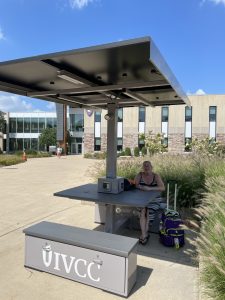When dreary winter blues is more than sadness
March 10, 2016
Plenty of people feel a little more down than usual during the different seasons, but according to the website Psychology Today, about 10 million Americans suffer from a deeper winter depression called seasonal affective disorder.
Winter seasonal affective disorder (SAD) is a hibernation-like depression that sets in during late fall or early winter and lasts through the cold months of the year.
According to the Mayo Clinic website, the change in seasons and lack of sunlight in the winter affects some of the chemicals in the brain, possibly causing this disorder.
For example, serotonin is a chemical that affects a person’s mood. The Mayo Clinic staff stated in an online article that “reduced sunlight can cause a drop in serotonin that may trigger depression.” Sunlight also affects one’s melatonin levels, the side effects being a change in mood and sleeping patterns.
Symptoms common with depression include irritability, losing interest in activities, constant tiredness or low energy. Withdrawing from social events can have great effects on a person. Some symptoms are harder to recognize, like over-eating, craving foods that are high in carbohydrates and having difficulty concentrating.
One of the counselors at IVCC, Missy Killian, gave a list of symptoms explaining that seasonal affective disorder can lead to “being extremely tired, lethargic, sad, irritable, and lacking motivation.” Depression can even become so overwhelming, it may lead to thoughts of suicide and substance abuse.
The website Psychology Today indicated depression begins around the age of 20. The site also said, “Some people experience symptoms severe enough to affect quality of life, and 6 percent require hospitalization.”
Mayo Clinic explained men tend to experience more intense symptoms, but women are more likely to develop seasonal affective disorder.
Young people also have a higher chance of winter SAD, as well as people who already suffer from mental disorders like depression and bipolar disorder. Even a person’s distance from the equator can be a risk factor. People farther from the equator are more likely to develop the symptoms.
There are a few treatments for mild symptoms that can be done at home. Light therapy is an easy way to get an extra dose of sunlight in the winter. Mayo Clinic stated that “Light therapy mimics natural outdoor light and appears to cause a change in brain chemicals linked to mood.”
However, for more intense symptoms, psychotherapy and medication could be needed. How can someone tell when it’s time to seek help. Killian said, “If you’re having suicidal thoughts, always seek help.” Killian also explained if the symptoms aren’t obvious then it’s vital to ask yourself, “Is this interfering with my daily routine ….” She went on to explain that if these depressive feelings are affecting one’s job, school work or interactions with others, then some kind of treatment is most likely needed.
It’s easy to feel down during the cold months of the year, but it’s important to know the difference, between a little dreariness and seasonal affective disorder.




